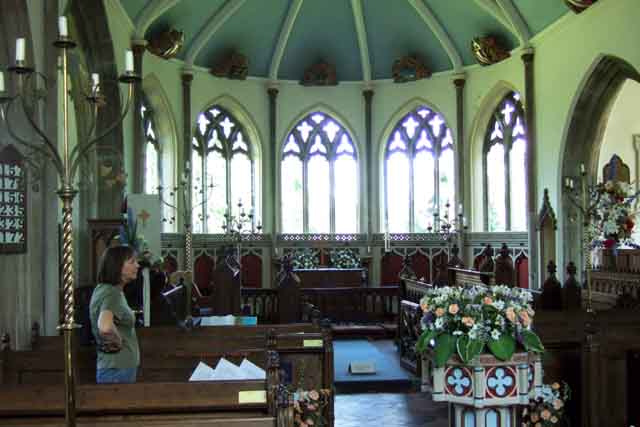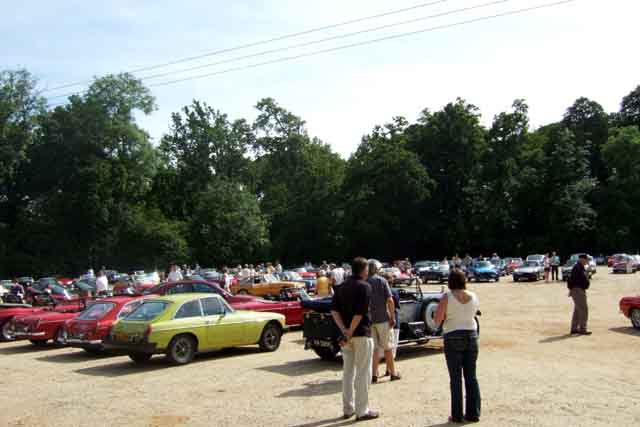
Clouds Hill, T.E. Lawrence's cottage, near Bovington Army Training Camp and Tank Museum. Lawrence served in the Tank Corps from 1923 to 1925 as a Private, and lived at Clouds Hill in retirement until his death in 1935, ironically while riding his Brough Superior motor bike back from Bovington Camp after posting a letter.

The cottage is in a very secluded spot surrounded by trees and rhododendron bushes, but on the side of a hill offering wonderful views of the Dorset countryside. The road past the cottage is now quite busy as it is one of the main roads to the camp.

Sneaky picture of the music room Lawrence constructed in the attic of the cottage, with a bronze bust and his typewriter (in the glass case) visible.

Moreton Church. Famous in its own right owing to its windows. The original stained glass windows were blown out in WWII, but instead of being reconstructed were replaced with engraved glass, which makes the church exceptionally light.

Lawrence's grave, a little way from the church which is situated in private grounds. A fine spot for a final resting place, at the head of the little cemetery in the shade of a large tree.

Welcoming committee for us on arrival at the hotel.

Just one of the car parks at the Sammy Miller Motorcycle museum.


Probably one of the oldest MGs in existence, a 1925 Morris Oxford-based MG 14/28 Super Sport (who said badge-engineering was new - and necessarily a bad thing)


A very rare sighting of the tonneau panel mounted static diagonal belt. This looks to be a very good repro (as far as I know the originals went NLA many years ago) as what was originally a black plastic release button in the middle of the 'hook' looks like springy metal in this example.

Deer at Bolderwood

Reputed to be the oldest tree in the Forest - the Knightwood Oak, 600 years old, 100ft tall, and a girth of 23ft. It was pollarded when young which is why there are five major branches about 20ft off the ground and not the usual single main trunk. Pollarding above head height meant the deer wouldn't graze the new shoots, as opposed to coppicing which cuts down to near ground level. Both pollarding and coppicing are a way of managing woodland for a supply of straight poles of varying thicknesses.

More 'Aaah's from the navigator near the Knightwood Oak. I think we saw more foals this year than in any previous year, and certainly more occasions of ponies standing in the middle of the road while cars had to navigate the verges to get round them.

Finish at Exbury Gardens.

A select few in front of Exbury House. Now privately owned, it was requisitioned in WWII for the training of the crews of landing craft used in D Day. There is a memorial to these crews in the gardens near Beaulieu River, where many of the crews departed from.

Well worth a visit for its views of Beaulieu River as well as its own grounds.


















